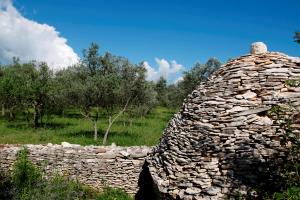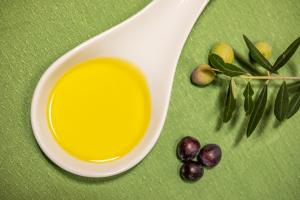Introduced varieties
Leccino
 Origin
Origin
Tuscany (Italy). Cultivated in Istria since 1940.
Agro biological properties
Thanks to its great adaptability, this is one of the most widely cultivated varieties in the world. Large, with a big trunk, long branches and large, round, robust foliage. Fruit bearing branches are short and hanging. Often used as a decorative plant. Flowers are very large compared to other varieties and grow separately. Bifurcation of the main bush-shaped branches is quite low. An early variety (September, October), resistant to lower temperatures. Good for large plantations with good, deep soil.
Fruit bearing
Good and continuous; olives pulpy, medium in weight (2 - 2,5g), rounded and elongated.
Fertilization
Anemophile fertilization (wind carried); recommended fertilizers: Pendolino, Maurino, Frantoio.
Resistance to adversities
Tolerates olive knot, peacock (or eye) spot (spilocea oleagina) and the olive moth (Prays oleae). Susceptible to olive fly (bactrocea oleae) and Rhynchites cribipennis.
Quality of the oil
Excellent quality with intensely fruity olive fragrance if harvested as the drupes darken. Softer, rounder, sweeter and less pungent if harvested after the drupes are completely dark. The oil yield is moderate. Olives can be used for preservation (black olives in brine), but the olive pit is quite large thus lowering its market value.









